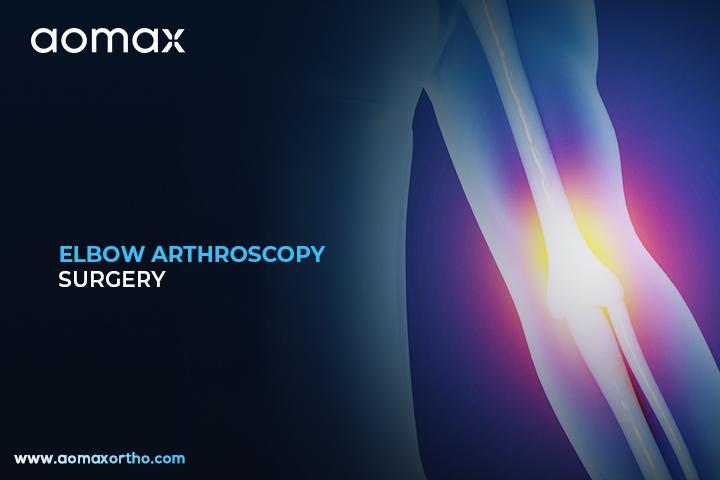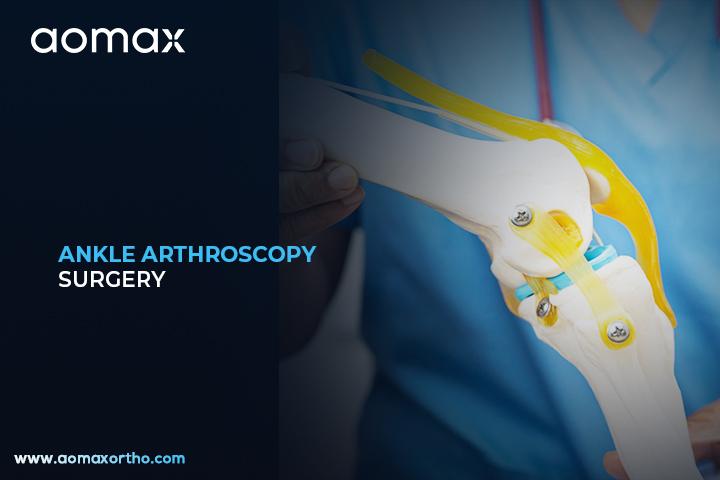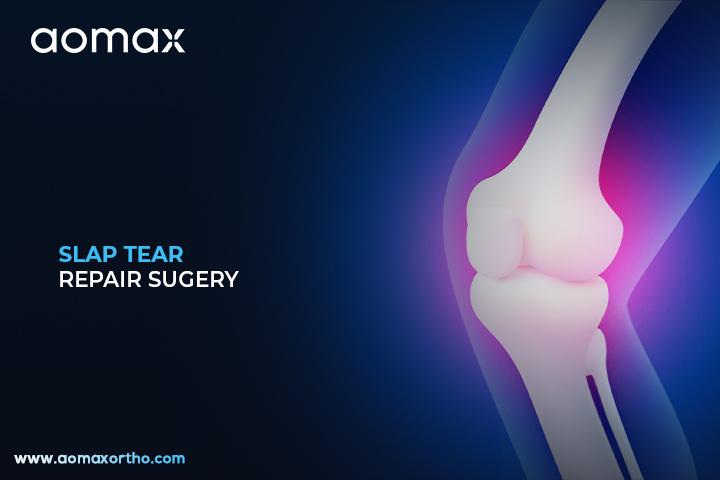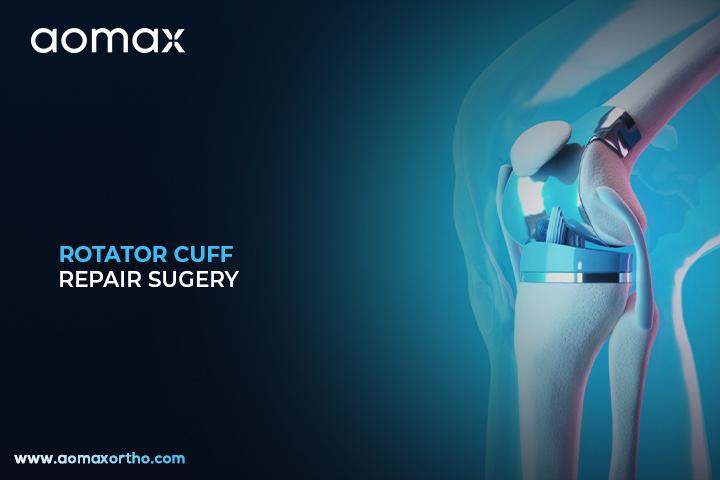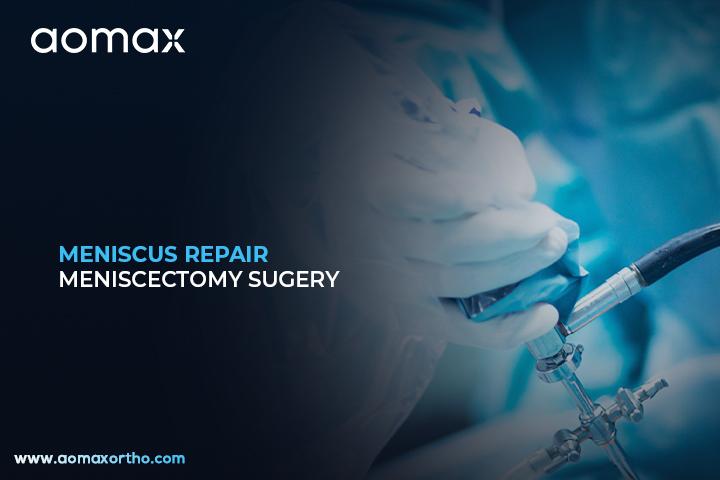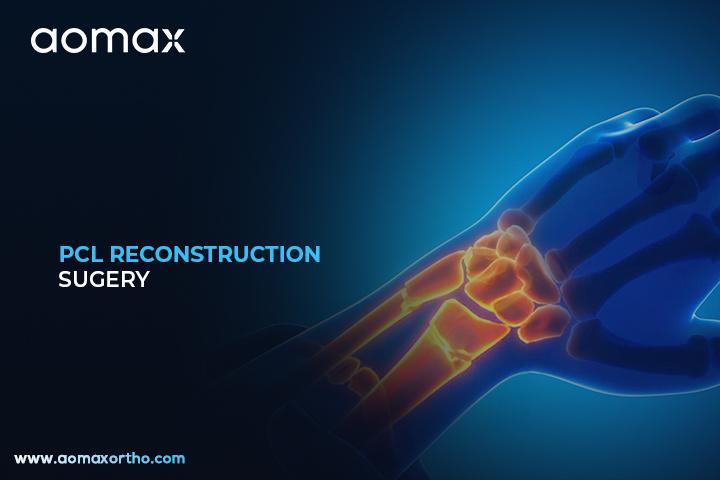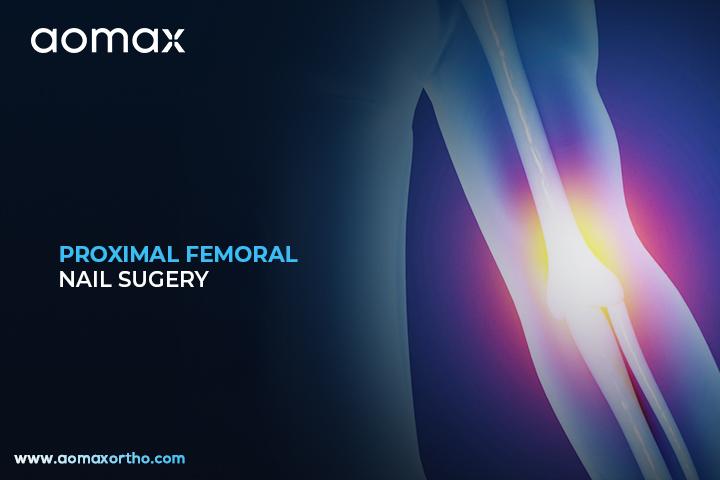Elbow Arthroscopy – Effective Orthopedic Surgery for Pain & Injury Repair
Overview of Elbow Arthroscopy
Elbow arthroscopy is a minimally invasive surgical procedure used to diagnose and treat problems inside the elbow joint. Surgeons make small cuts in the skin and insert a tiny camera to see inside the joint. This technique allows precise treatment with less pain and faster recovery compared to open surgery.
Inside the Elbow Arthroscopy Procedure
During elbow arthroscopy, surgeons create small portals around the elbow to insert the arthroscope and surgical tools. A camera attached to the arthroscope projects a clear view of the joint on a monitor, helping the surgeon identify damaged tissue, loose bodies, or inflammation. Saline solution is used to expand the joint, giving better visibility during the procedure. Specialized instruments such as shavers, graspers, and radiofrequency devices are used to trim or remove damaged tissue. Surgeons can also repair ligaments or smooth rough bone surfaces through the same small incisions. The method ensures less trauma to surrounding tissues and quicker functional recovery.
Medical Reasons for Elbow Arthroscopy
- To remove loose bone or cartilage fragments inside the elbow joint
- To treat stiffness or limited motion caused by scar tissue
- To repair damaged ligaments or tendons
- To treat arthritis-related problems like bone spurs
- To manage chronic elbow pain that does not improve with non-surgical treatments
Surgical Tools Used in Elbow Arthroscopy
- Arthroscope – 4 mm
- Arthroscopy Sheath
- Arthroscopy Shaver System
- Arthroscopy RF Cautery Machine
- Orthopedic Arthro Pump
- Digital Tourniquet
- Orthopedic Dilator
- Orthopedic Hook
- Arthroscopy Probe
- Arthroscopy Cannula
Countries Performing the Most Elbow Arthroscopies
- United States
- Germany
- Japan
- United Kingdom
- India
Advantages of Elbow Arthroscopy
- Provides accurate diagnosis and treatment with minimal tissue damage
- Results in faster recovery and earlier return to daily activities
- Reduces post-operative pain compared to open surgery
- Lowers the risk of complications like infection and stiffness
- Improves joint movement and overall elbow function
Aomax Ortho is a globally trusted manufacturer of Elbow Arthroscopy-related products, offering advanced solutions to support surgeons in achieving successful outcomes.
Get Connected:
+91 98989 50530 | exports@aomaxortho.com | www.aomaxortho.com
Ankle Arthroscopy – Trusted Orthopedic Surgery for Sports & Trauma Care
Overview of Ankle Joint Surgery
Ankle arthroscopy is a minimally invasive surgery used to treat problems inside the ankle joint. Surgeons use a small camera and special instruments inserted through tiny cuts to see and repair the joint. This surgery helps reduce pain, improve movement, and speed up recovery.
How Ankle Arthroscopy is Performed
During ankle arthroscopy, a surgeon makes small incisions around the ankle to insert an arthroscope and thin surgical tools. The arthroscope is a tiny camera that provides a clear view inside the joint on a monitor. Surgeons can then remove damaged tissue, smooth rough cartilage, or repair ligaments. Saline fluid is often used to expand the joint for better visibility. Advanced instruments like shavers and radiofrequency devices allow precise treatment of affected areas. This technique is less invasive than open surgery and usually results in faster healing and fewer complications.
Common Health Issues Requiring This Surgery
- To treat chronic ankle pain caused by cartilage damage.
- To remove loose bone or cartilage fragments inside the joint.
- To repair torn or weakened ligaments.
- To treat ankle impingement, which restricts joint movement.
- To manage joint inflammation or infection not improving with other treatments.
Surgical Tools Used in Ankle Arthroscopy
- Arthroscope – 4 mm
- Arthroscopy Sheath
- Arthroscopy Trocar
- Arthroscopy Punch
- Arthroscopy Grasper
- Arthroscopy Scissors
- Arthroscopy Shaver System
- Arthroscopy RF Cautery Machine
- Fluid Management System (Arthro Pump)
- Cannula System
Countries with the Highest Procedure Rates
- United States
- Germany
- Japan
- United Kingdom
- India
Clinical Benefits of Ankle Arthroscopy
- Minimally invasive surgery with smaller cuts and less scarring.
- Faster recovery compared to traditional open ankle surgery.
- Reduced risk of infection due to smaller incisions.
- Precise visualization of the joint, allowing accurate treatment.
- Helps restore ankle strength, stability, and long-term mobility.
Aomax Ortho is a globally leading manufacturer of Ankle Arthroscopy related products, offering advanced and reliable solutions for orthopedic surgeries worldwide.
Get Connected:
+91 98989 50530 | exports@aomaxortho.com | www.aomaxortho.com
Hip Arthroscopy – Advanced Orthopedic Surgery for Hip Joint Preservation
Understanding Hip Arthroscopy
Hip arthroscopy is a minimally invasive surgery used to treat problems inside the hip joint. Surgeons use a tiny camera and special instruments inserted through small cuts to see and repair the hip. This procedure helps patients recover faster with less pain compared to open surgery.
Advanced Hip Arthroscopy Technique for Joint Preservation
During hip arthroscopy, surgeons insert an arthroscope through a small incision to clearly view the hip joint. Specialized instruments are then used to trim damaged cartilage, remove loose fragments, or repair torn labrum tissue. The procedure may also include smoothing irregular bone surfaces to improve joint movement. Continuous fluid irrigation is used to expand the joint and provide a clear view for precise work. High-definition visualization systems guide surgeons to perform accurate and controlled repairs. This technique helps preserve natural hip structure and reduces the need for more invasive surgeries in the future.
Conditions Treated with Hip Arthroscopy
- To repair a torn hip labrum and restore joint stability.
- To remove loose bodies of cartilage or bone causing pain.
- To treat femoroacetabular impingement (FAI) and prevent further damage.
- To address early stages of arthritis and delay joint replacement.
Products Related to Hip Arthroscopy
- Arthroscope
- Arthroscopy Cannula
- Arthroscopy Trocar
- Arthroscopy Hook Scissors
- Arthroscopy Punch
- Arthroscopy Shaver System
- Arthroscopy RF Cautery System
- Arthroscopy Probe
- Fiber Optic Light Cable
- Arthro Pump
Worldwide Adoption of Hip Arthroscopy
- United States
- Germany
- United Kingdom
- Japan
- India
How Patients Benefit from Hip Arthroscopy
- Minimally invasive approach with faster recovery time.
- Reduced risk of infection compared to open surgery.
- Preservation of natural joint function and structure.
- Improved accuracy due to enhanced visualization of the hip joint.
- Effective pain relief and improved mobility in daily activities.
Aomax Ortho is a leading manufacturer of Hip Arthroscopy related products, supporting surgeons worldwide with high-quality and reliable instruments.
Get Connected:
+91 98989 50530 | exports@aomaxortho.com | www.aomaxortho.com
Orthopedic SLAP Tear Repair – Shoulder Joint Stability & Function Restoration
Overview of SLAP Tear Repair
SLAP tear repair is a surgery used to fix a tear in the labrum of the shoulder joint. The labrum is a ring of cartilage that helps stabilize the shoulder. This surgery is commonly done when the tear causes pain, weakness, or difficulty in shoulder movement.
Advanced Insights into SLAP Tear Repair
During SLAP tear repair, the surgeon uses an arthroscope, a small camera inserted through tiny incisions, to see inside the shoulder. Specialized instruments are used to reattach the torn labrum to the bone using sutures or anchors. The procedure is usually performed under regional or general anesthesia. Surgeons may use absorbable or non-absorbable suture anchors depending on the tear type. The minimally invasive approach helps reduce tissue damage and recovery time. This surgery improves shoulder strength, stability, and range of motion for patients with labral injuries.
When is SLAP Tear Repair Needed?
- To treat shoulder instability caused by a torn labrum.
- To relieve persistent shoulder pain that does not improve with physiotherapy or medications.
- To restore strength and motion for athletes with repetitive overhead movements.
- To repair labral damage from trauma, dislocation, or heavy lifting injuries.
Products Related to SLAP Tear Repair
- Arthroscope
- Arthroscopy Pump
- Arthroscopy RF Cautery System
- Knotless Suture Anchor
- PEEK Suture Anchor with Fiber
- All-Suture Anchor
- Fiber Wire
- Fiber Tape
- Arthroscopy Cannula
- Arthroscopy Hook Scissors
Countries Performing the Most SLAP Tear Repair
- United States
- Germany
- United Kingdom
- Japan
- India
Key Outcomes of SLAP Tear Repair
- Provides long-term stability to the shoulder joint.
- Improves overhead motion and athletic performance.
- Reduces the risk of recurrent shoulder dislocation or subluxation.
- Helps in faster recovery compared to open surgical techniques.
- Decreases the chance of future shoulder arthritis caused by untreated labral tears.
Aomax Ortho is a leading manufacturer of SLAP Tear Repair-related products, offering advanced arthroscopy instruments and implants to support successful orthopedic surgeries.
Get Connected:
+91 98989 50530 | exports@aomaxortho.com | www.aomaxortho.com
Bankart Repair – Effective Surgical Solution for Shoulder Instability
Overview of Bankart Repair Surgery
Bankart Repair is a surgical procedure aimed at stabilizing the shoulder joint by repairing a torn labrum. This tear often results from recurrent shoulder dislocations. The surgery restores the shoulder’s normal anatomy, reducing the risk of future dislocations.
Restoring Shoulder Stability – The Bankart Repair Procedure
Bankart Repair is typically performed using minimally invasive arthroscopic techniques. Small incisions are made around the shoulder to insert a camera and specialized instruments. The torn labrum is reattached to the glenoid (shoulder socket) using suture anchors. This reattachment restores the bumper effect of the labrum, keeping the humeral head centered during shoulder motion. The procedure aims to stabilize the shoulder joint and prevent future dislocations. Post-surgery, a structured rehabilitation program is essential for optimal recovery.
When is Bankart Repair Needed?
- To repair a torn labrum resulting from recurrent shoulder dislocations.
- To stabilize the shoulder joint and prevent future dislocations.
- To alleviate pain associated with shoulder instability.
- To restore normal shoulder function and range of motion.
Key Products for Bankart Repair Surgery
- Arthroscopic Suture Anchors
- Suture Passing Instruments
- Arthroscopic Shavers and Debridement Tools
- Shoulder Positioners
- Cannulas for Arthroscopy
- Arthroscopic Camera Systems
- Knot Pushers
- Bioabsorbable Anchors
- RF Ablation Probes
- Shoulder Portal Instruments
Countries with Highest Bankart Repair Rates
- United States
- Germany
- Japan
- United Kingdom
- Australia
Positive Outcomes of Bankart Repair
- Restores shoulder stability, reducing the risk of future dislocations.
- Alleviates pain associated with shoulder instability.
- Improves range of motion and shoulder function.
- Minimally invasive approach leads to quicker recovery times.
- Allows patients to return to sports and daily activities safely.
Aomax Ortho is a leading manufacturer of Bankart Repair related products, offering reliable and advanced surgical tools for orthopedic procedures.
Get Connected:
+91 98989 50530 | exports@aomaxortho.com | www.aomaxortho.com
Rotator Cuff Repair – Advanced Orthopedic Surgery for Shoulder Injuries
Overview of Rotator Cuff Repair
Rotator cuff repair is a surgical procedure to repair torn tendons in the shoulder. It helps restore shoulder movement and reduces pain. It is typically performed when non-surgical methods like physical therapy and medications have not provided relief.
Arthroscopic Technique for Rotator Cuff Repair
In rotator cuff repair surgery, small incisions are made around the shoulder to insert an arthroscope—a small camera—and specialized instruments. The surgeon trims the damaged tendon edges and reattaches the tendon securely to the bone using suture anchors. The procedure uses tools like shaver systems, RF cautery machines, sheaths, and surgical cameras for clear visualization and precise work. These instruments ensure minimal damage to surrounding tissue and enhance healing. The surgeon may choose between an open approach or a minimally invasive arthroscopic method. A sling or immobilizer is typically used post-surgery to protect the repair and support recovery.
Conditions Requiring Rotator Cuff Repair Surgery
- To repair a torn rotator cuff tendon causing persistent shoulder pain and weakness
- To improve shoulder function and mobility when conservative treatments fail
- To prevent further degeneration of the tendon and surrounding muscles
- To restore normal daily and athletic shoulder activities
- To reduce risk of future joint damage or degeneration due to instability
Surgical Instruments Used for Rotator Cuff Repair
- Arthroscopy Shaver System
- Arthroscopy RF Cautery Machine
- Arthroscopy Sheath
- Arthroscope (Camera System)
- HD Camera System
- Arthroscopy Suction Tube
- Arthroscopy Instrument Set (e.g., forceps, scissors, graspers)
- Arthroscopy Shaver Blades
- RF Probes / Electrodes (part of RF Cautery Machine system)
- Irrigation Pump (Arthro Pump)
Leading Countries Performing Rotator Cuff Repair
- United States
- Germany
- Japan
- United Kingdom
- Australia
Post-Surgery Improvements
- Restores muscular strength and joint stability in the shoulder
- Provides precise tendon reattachment with minimal tissue damage
- Promotes faster recovery and shorter rehabilitation time
- Reduces postoperative pain and risk of scar tissue formation
- Enhances long-term shoulder function and active lifestyle retention
Aomax Ortho is a leading manufacturer of rotator cuff repair-related instruments and implants, offering innovative, high-quality solutions trusted by orthopedic surgeons worldwide.
Get Connected:
+91 98989 50530 | exports@aomaxortho.com | www.aomaxortho.com
Meniscus Repair – Effective Orthopedic Procedure for Torn Knee Cartilage
Basics of Meniscus Repair / Meniscectomy
Meniscus repair and meniscectomy are surgical procedures used to treat tears in the knee’s meniscus, a cartilage that cushions the joint. Meniscus repair involves stitching the torn cartilage back together, while meniscectomy entails removing the damaged portion. These surgeries aim to alleviate pain and restore knee function, especially after injury or degeneration.
Surgical Approach and Techniques
Both procedures are typically performed arthroscopically, using small incisions and a camera to guide the surgery. In meniscus repair, the torn edges are sutured together, promoting healing, particularly in areas with good blood supply. Meniscectomy involves trimming or removing the damaged meniscal tissue to relieve symptoms. The choice between repair and meniscectomy depends on factors like the tear’s location, patient’s age, activity level, and overall knee health. While meniscectomy offers quicker symptom relief, meniscus repair is preferred when feasible, as it preserves the cartilage and reduces long-term arthritis risk. Recovery times vary, with meniscus repair generally requiring a longer rehabilitation period.
Purpose of the Surgery
- To treat meniscus tears resulting from sports injuries, trauma, or degenerative changes.
- To alleviate knee pain, swelling, and instability caused by meniscal damage.
- To restore knee function, enabling patients to return to daily activities and sports.
- To prevent further joint damage and reduce the risk of developing osteoarthritis.
Equipment and Tools Used For Meniscus Repair / Meniscectomy
- Arthroscope
- Meniscal repair sutures
- Shaver blades
- Graspers
- Cannulas
- Meniscal anchors
- Radiofrequency probes
- Surgical scissors
- Fluid management systems
- Arthroscopic pumps
Top 5 Countries of Meniscus Repair / Meniscectomy
- United States
- Germany
- Japan
- South Korea
- United Kingdom
Benefits and Impact of Meniscus Repair / Meniscectomy
- Preserves knee joint function by repairing or removing damaged tissue.
- Reduces pain and inflammation effectively.
- Speeds up recovery compared to open surgery methods.
- Minimizes damage to surrounding healthy cartilage.
- Helps prevent early onset of knee arthritis.
Aomax Ortho is a leading manufacturer of meniscus repair and meniscectomy related products, providing high-quality surgical instruments and materials for orthopedic procedures.
Get Connected:
+91 98989 50530 | exports@aomaxortho.com | www.aomaxortho.com
ACL Reconstruction Surgery – Precision Care for Anterior Cruciate Ligament Injuries
ACL Reconstruction Introduction
ACL Reconstruction is a surgical procedure to fix a torn anterior cruciate ligament in the knee. This ligament is important for keeping the knee stable, especially during movement. The surgery involves replacing the damaged ligament with a graft taken from another part of the body or a donor.
Surgical Procedure of ACL Reconstruction
During ACL reconstruction, the surgeon first makes small cuts around the knee to insert a tiny camera and surgical instruments. The torn ACL is removed, and a new graft—usually from the patient’s hamstring, patellar tendon, or a donor—is carefully placed. This graft acts like a new ligament to support knee movement. Special surgical drills and arthroscopic tools are used to create tunnels in the bones to secure the graft. Screws or other fixation devices are then used to hold the graft in place until it heals. The surgery is minimally invasive and helps restore full knee function over time.
Why Doctors Recommend ACL Reconstruction
- To treat a complete ACL tear that causes knee instability.
- To help athletes or active individuals return to sports or physical activities.
- To prevent further damage to the knee joint, including cartilage or meniscus injury.
- When physical therapy fails to improve symptoms or function.
Instrumentation & Products for ACL Reconstruction
- ACL PCL Instrument Set: Specialized set for graft preparation, drilling, and fixation in cruciate ligament surgeries.
- Arthroscopy Shaver System and Shaver Blade: For debridement, shaping, and cleaning joint tissues during minimally invasive procedures.
- RF Cautery Machine: Provides precise cutting and coagulation under arthroscopic conditions.
- Arthroscope, Camera System, Sheath, Forceps, Graspers, and Suction Tubes: Essential for visualizing and maneuvering within the joint.
- Interference Screws (e.g., stainless steel or PEEK) for graft fixation.
- Endo-Button devices (Continuous Loop, Flexible Loop, Fixed Loop, with washer, etc.) to secure grafts effectively.
- Low-Profile Cancellous Screws, Titanium Washers, Ligament Staples—used to reinforce graft fixation and ensure stability.
Top Nations in ACL Reconstruction Surgery
- United States
- Germany
- Japan
- South Korea
- Australia
Key Benefits of Undergoing ACL Reconstruction
- Improves knee stability and prevents the joint from giving out.
- Restores strength and full range of motion to the knee.
- Reduces long-term risk of osteoarthritis after an ACL injury.
- Allows safe return to sports or physical activities.
- Minimally invasive techniques lead to faster recovery and less scarring.
Aomax Ortho is a leading global manufacturer of ACL Reconstruction-related instruments and implants, offering precision-engineered tools trusted by orthopedic surgeons for advanced ligament repair.
Get Connected:
+91 98989 50530 | exports@aomaxortho.com | www.aomaxortho.com
PCL Reconstruction – Effective Orthopedic Procedure for Ligament Injuries
Overview of PCL Reconstruction Surgery
PCL Reconstruction is a surgical procedure to repair both injured posterior cruciate ligaments in the knee. This surgery is typically done after severe trauma or sports injuries that affect both PCL bundles. It helps restore knee stability and improve mobility.
The Surgical Technique Behind PCL Reconstruction
In this procedure, surgeons reconstruct both the anterolateral and posteromedial bundles of the PCL using tendon grafts. The surgery is performed using arthroscopy, a minimally invasive technique that involves a small camera and instruments inserted through tiny incisions. Hamstring tendons or allografts are commonly used to replace the damaged ligaments. Surgeons drill tunnels in the femur and tibia to position and secure the grafts with screws or buttons. Fluoroscopy and tensioning devices are often used for accurate placement and alignment. This advanced reconstruction improves knee function and prevents long-term joint instability.
When is PCL Reconstruction Necessary?
- To treat complete PCL ruptures involving both bundles.
- When conservative treatment fails to restore knee stability.
- In cases of multiligament knee injuries or high-grade posterior laxity.
- To prevent early-onset arthritis due to chronic PCL deficiency.
Essential Instruments and Implants for PCL Reconstruction
- Arthroscopic Camera System
- PCL Reconstruction Instrument Set
- Interference Screws
- Tibial Guide for PCL
- Femoral Aimer
- Graft Tensioner
- Soft Tissue Graft (Hamstring/Allograft)
- Suture Passer
- Cannulas for Arthroscopy
- Bioabsorbable Fixation Devices
Global Leaders in Double PCL Reconstruction
- United States
- Germany
- South Korea
- Japan
- India
Benefits of Double Bundle PCL Surgery
- Restores full knee stability after dual PCL injury.
- Improves joint biomechanics and functional movement.
- Reduces the risk of future meniscus or cartilage damage.
- Helps athletes and active individuals return to sports safely.
- Prevents chronic pain and long-term knee degeneration.
Aomax Ortho is a leading manufacturer of PCL Reconstruction related products, offering high-quality surgical tools and implants for orthopedic professionals worldwide.
Get Connected:
+91 98989 50530 | exports@aomaxortho.com | www.aomaxortho.com
Proximal Femoral Nail – Advanced Orthopedic Surgery for Hip and Femur Fractures
Basic Insight into the Procedure
Proximal femoral nail surgery is a procedure used to treat fractures of the upper femur near the hip. A long metal rod (nail) is inserted into the thigh bone to align and stabilize the broken segments. This helps the bone heal correctly and enables the patient to start moving sooner.
Nailing the Femur with Care: Surgical Process and Tools
During proximal femoral nail surgery, the patient is placed under anesthesia, and a small incision is made near the hip. The surgeon guides a wire down the center of the femur using real-time imaging (fluoroscopy), then drills and reams the canal to accommodate the intramedullary nail. The nail is inserted and secured with locking screws at both proximal and distal ends to ensure stability. Specialized instruments—like guide wires, reamers, targeting devices, and fluoroscopy equipment—help achieve accurate placement. The procedure promotes stable fixation and allows early weight-bearing.
When and Why This Surgery is Needed
- To treat inter- or pertrochanteric femoral fractures.
- For unstable subtrochanteric fractures requiring strong internal support.
- To manage fractures in osteoporotic or elderly patients.
- To enable early mobilization and reduce complications from immobility.
Essential Equipment for Proximal Femoral Nail Surgery
- Locking Profile Cancellous Screw (for stable fixation in spongy bone).
- Orthopaedic Probe (for tissue and bone exploration).
- Orthopedic Curette (for debridement at fracture site).
- Regular (Titanium) Washer (for load distribution under screws).
- Orthopedic Puncture Needle (for guiding or aspiration near bone).
- Arthroscopy Instruments Set – e.g., graspers and punch forceps (used in fracture assessment or minimally invasive visualization).
- Arthroscopy Shaver System or Blade (to clear debris or cartilage during evaluation).
- Arthroscopy Sheath (for maintaining clear visual access if arthroscopy is used adjunctively).
- Orthopedic Meniscotome (rarely, but potentially used in arthroscopic joint evaluation).
(Note: While not specific PFN nails, these instruments and fixation hardware are integral in proximal femoral nailing procedures.)
Top 5 Countries Performing Proximal Femoral Nail Surgery (most to least)
- India
- United States
- Germany
- Japan
- United Kingdom
Clinical Outcomes and Benefits
- Enables strong internal support, reducing risk of fracture displacement.
- Promotes early weight-bearing and shorter recovery time.
- Minimally invasive approach preserves soft tissue and blood supply.
- Lowers complication rates (e.g., infection, fixation failure) compared to open methods.
- Supports accurate anatomical alignment through guided instrumentation.
Aomax Ortho is a leading manufacturer of Proximal Femoral Nail Surgery-related products, offering high-quality fixation hardware and surgical instruments that support reliable and precise orthopedic trauma care.
Get Connected:
+91 98989 50530 | exports@aomaxortho.com | www.aomaxortho.com

